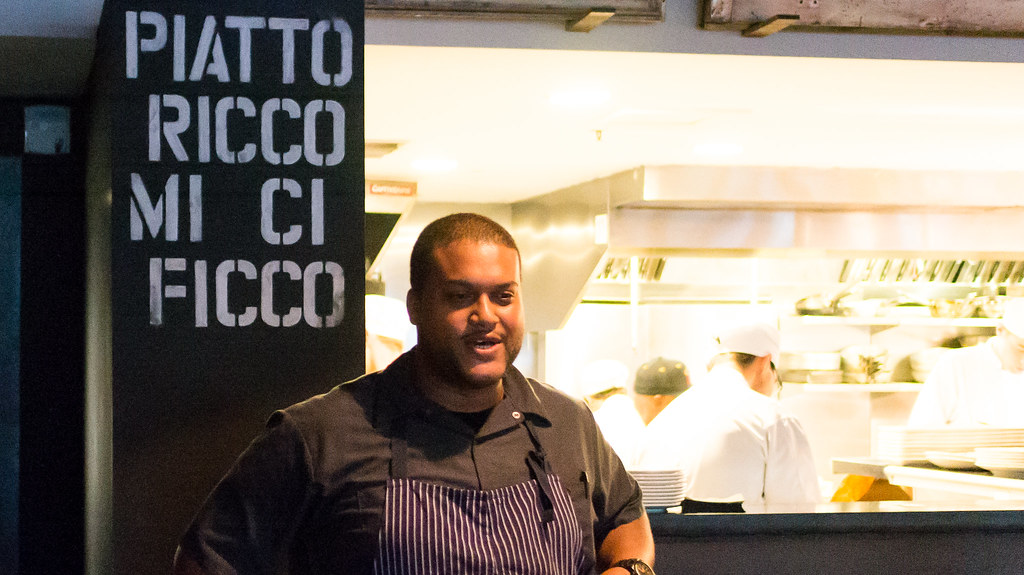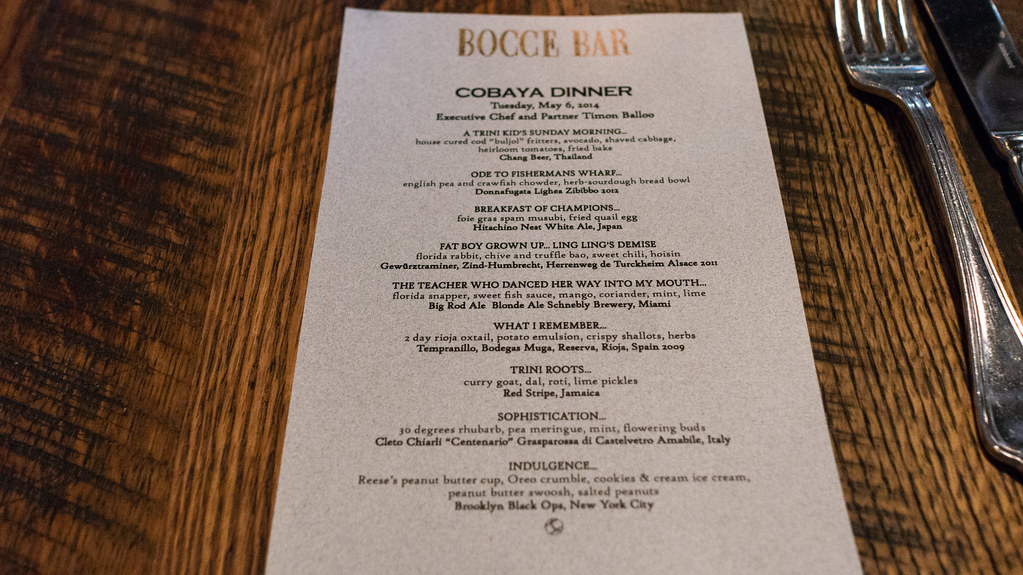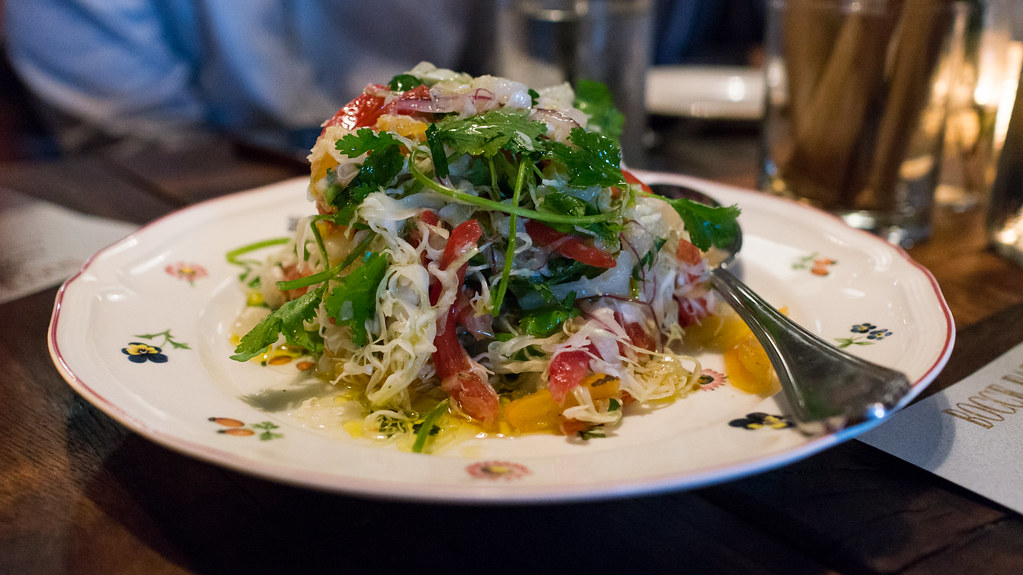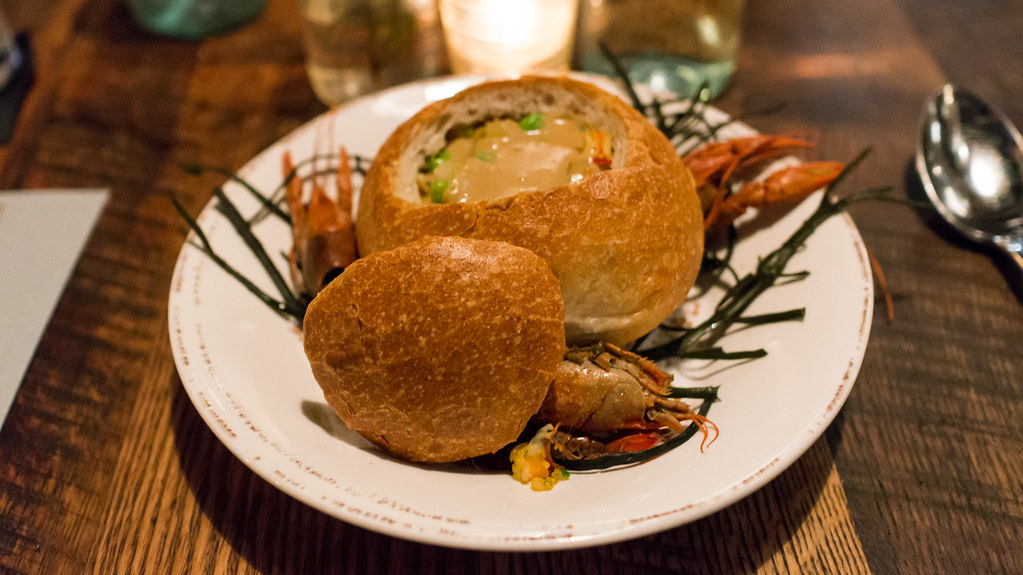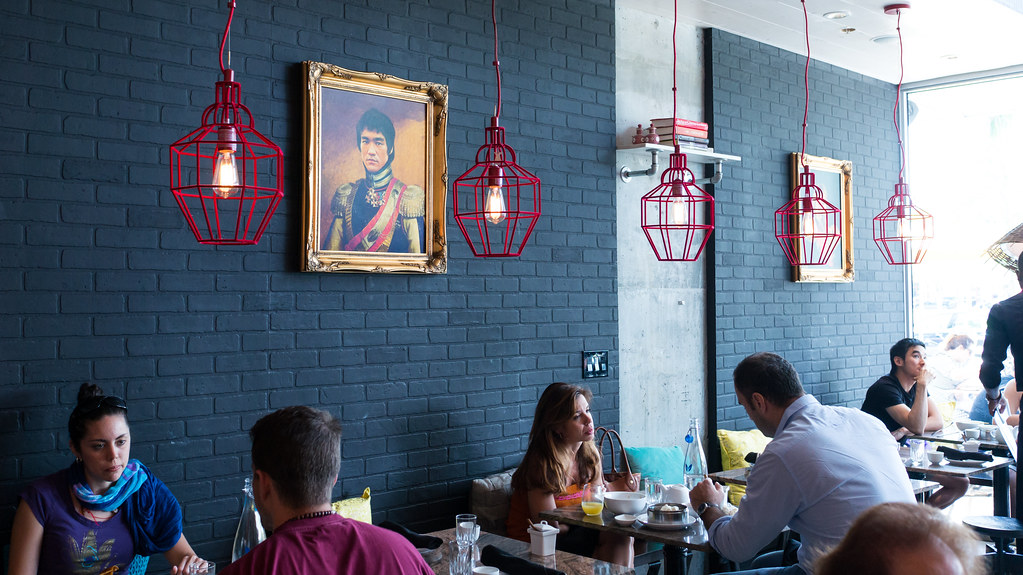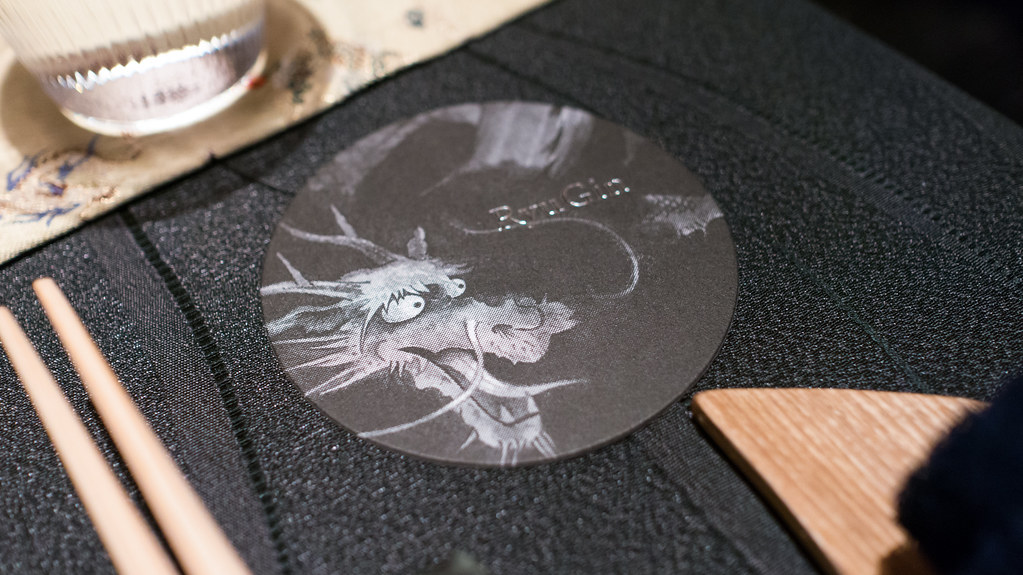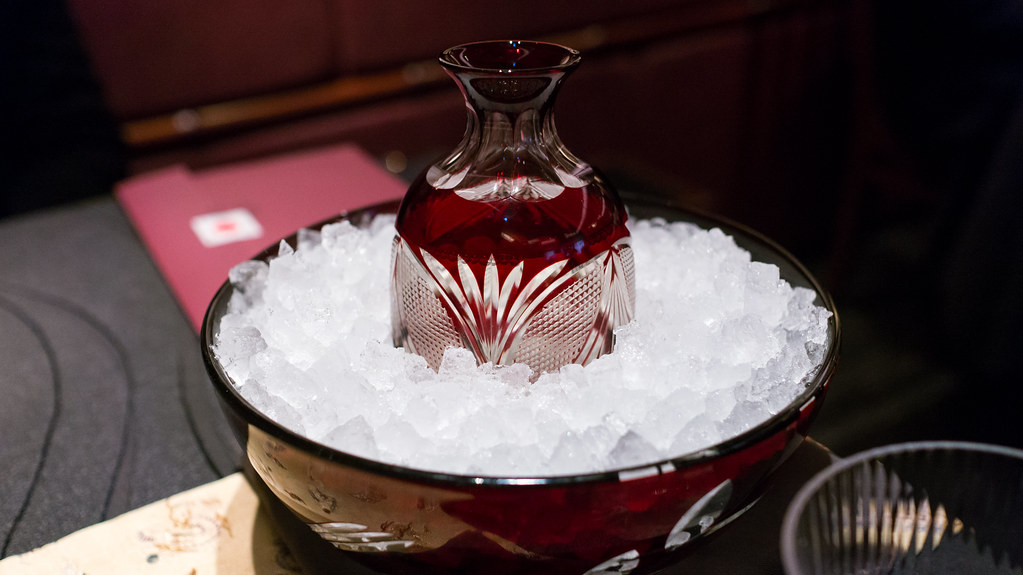This last type is often the most difficult to pull off, because there is no guarantee everyone has the same memory bank of experiences, or that they were absorbed in the same way. (For more thoughts on "story food" and capturing food memories, read this recent piece by Bruce Palling in "Cutting Edge Chefs Serve Up Food That Tells a Story"). Getting the backstory is helpful, which is part of why interaction can be a key to a meaningful dining experience.
Chef Timon Balloo took the autobiographical approach to the Cobaya dinner he put on last week, putting together a menu that told the story of his life in food. He also did a great job filling in the backstory which wound a meandering path from a Trinidadian childhood breakfast to the two Midtown Miami restaurants – Sugarcane Raw Bar Grill and Bocce Bar – that he runs today.
(You can see all my pictures in this CobayaBalloo flickr set).
Our group of nearly forty guinea pigs took over several large tables set in front of the open kitchen of Bocce Bar, which recently opened a few doors down from Sugarcane in the space which was formerly occupied by Sustain. As we always do, we told Timon that we didn't want "Sugarcane" food or "Bocce Bar" food – we wanted "Timon" food. He did exactly that, with a nine-course menu that paid tribute to his culinary influences and inspirations.
"A Trini Kid's Sunday Morning"
house cured cod "buljol" fritters, avocado, shaved cabbage, heirloom tomatoes, fried bake
Chang Beer, Thailand
Growing up in a Trinidadian family, this was a typical weekend breakfast – salt cod tossed with shredded cabbage, tomatoes and fresh herbs, tucked into "bake," a simple, dense, chewy bread (you may have also heard of "Bake and Shark," another typical Trini recipe). This doesn't look or sound like much, but it was one of the dishes of the night for me, and a great start to our meal.[1] The snappy, spicy Chang Beer pairing was also right on target, as were all the pairings, which smartly and effectively featured beers as often as wines.
"Ode to Fisherman's Wharf"
english pea and crawfish chowder, herb-sourdough bread bowl
Donnafugata Lighea Zibibbo 2012
Chef Balloo spent some formative years in San Francisco, and while there are several potential candidates for an iconic San Francisco dish, the chowder in a sourdough bread bowl served at dozens of spots along Fisherman's Wharf may be the most ubiquitous. Timon stuck with the classic format but put a seasonal spin on the ingredients, subbing in a crawfish bisque studded with English peas for the typical clam and potato chowder.
(continued ...)

